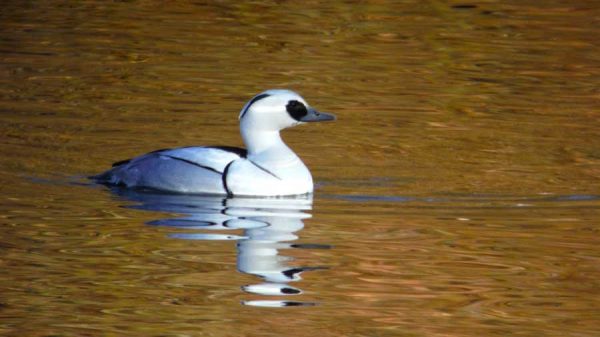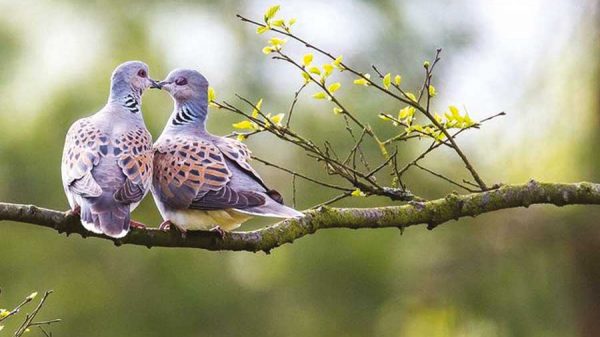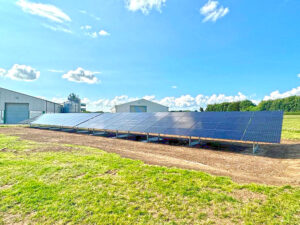There is nothing quite like the taste of home grown strawberries, ripened on the plant, they taste so much sweeter that distinctive taste and smell is so much stronger than shop bought fruit. Most varieties, with the exception of perpetual fruiting ones will have now finished fruiting and will be sending out lots of runners, long string like stems with a new plant developing at the tip. If you don’t need any more plants its a good idea to remove these before they become a tangled mess taking all the energy out of the main plant. Any dead or damaged leaves can be removed at the same time.
I replanted my strawberry bed this spring after potting up runners from my previous strawberry plants, allowing one or two runners to develop, I plunge a plant pot in the soil near the plant, (previously filled with good quality general purpose compost) and peg the developing plant into the middle of the pot with an opened out paper clip. The plant quickly roots and the runner can be cut from the main plant after about four or five weeks. During dry spells it’s a good idea to water the sunken pot and soil immediately around the pot. Once severed the pot can be lifted and placed in a sheltered area ready for planting into the new bed in late summer or early autumn.
The first year crop will not be as good as in subsequent years as the plant builds up and establishes. I remove all the runners in the first year giving them a dressing of chicken pellets and the occasional feed of liquid tomato fertiliser, this really boosts the plant ready for next year. They will be quite happy for about four years after which they should be replaced and ideally replanted in a new location.
If you are limited for space then why not try some in a large container or window box, they will however need more attention feeding and watering on a regular basis through the growing season.
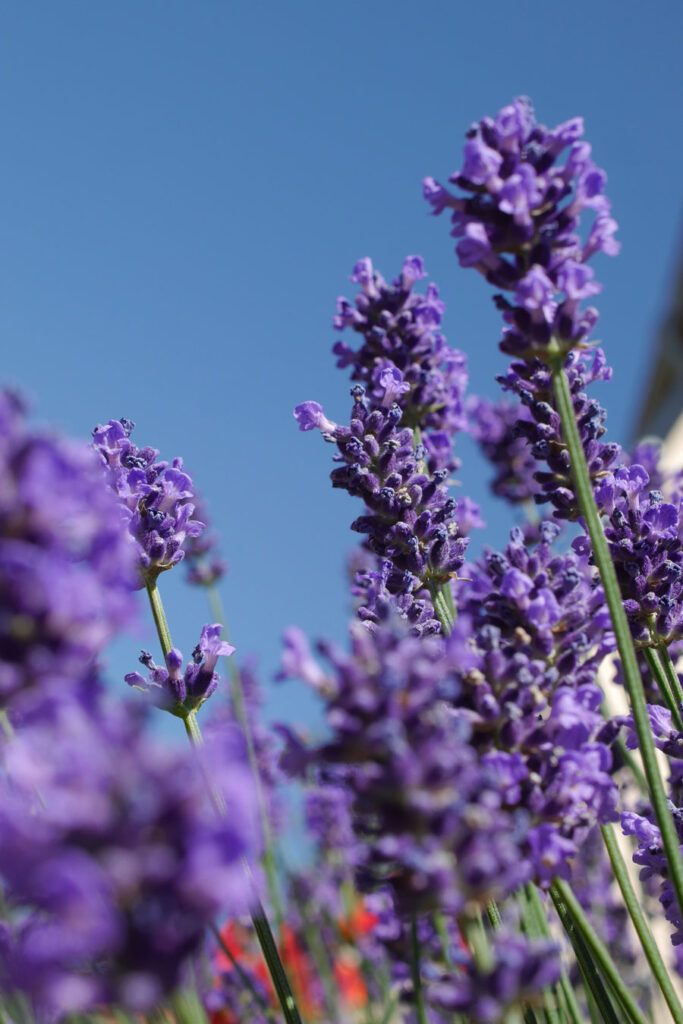
Lavender is also one of those plants that needs a little attention if you are to avoid it turning into a straggly woody plant. Planted in a sunny position in soil that drains well, Lavender does not need a rich soil, it originates from the Mediterranean region like many of our garden herbs. Flowering in early to mid summer they produce flower spikes topped with a bundle of mid blue flowers that give of a beautiful scent. The flowers can be harvested and used in many ways, from adding to cakes and biscuits to placing in a cotton bag to scent a room.
Lavender can be planted individually but look best as a low hedge or medium sized group and with care will provide colour and scent for several years after which they should be replaced with new plants raised from cuttings or bought from a local nursery.
It is important to trim the plants around the end of the month as the flowers fade, removing the flower stalk and an inch or so of the leafy shoot. This will encourage the plant to remain bushy and produce more shoots which means more flowers next year. Lavender does not generally need feeding but the occasional light dressing of general fertiliser every couple of years will help keep the plant healthy. There are cultivars that are suitable for growing in pots but these will need some winter protection as the roots can be damaged by frost, ideally place in a frost free place or close to the house wall.
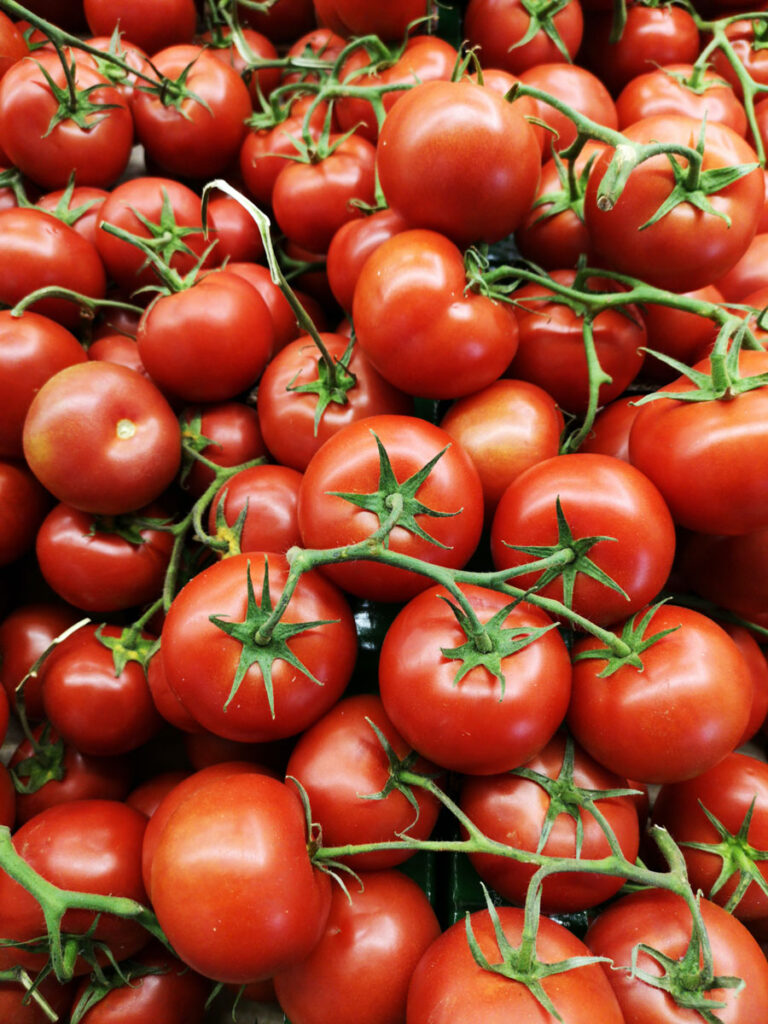
Tomatoes whether grown outdoors or in the greenhouse need a reasonable amount of attention if they are to produce a good crop of fruit. The weather has not been the best for outdoor cultivation this year and the plants in the greenhouse have experienced a very hot late spring followed by a changeable early summer. I use a shade net on my greenhouse but had to take it off at the beginning of July due to the wet cloudy weather. I have been trying some heritage cultivars of the beefsteak type, ( Ananis Noire and Big Rainbow), which produce large fruit with a more acidic tomato taste great for cooking and making sauces to freeze for use during the winter months.
We grow the variety Shirley for salads and sandwiches partly because it was my Mum’s favourite, and has great flavour and Sungold, a sweet ‘cherry’ type tomato which rarely makes it to the kitchen, it’s like eating sweets straight from the plant. Continue feeding your plants every week, removing side shoots and some of the lower leaves if they are turning yellow.
Next month, (not too late to sow salad leaves, get ready for garlic, boost your container and basket displays.)
Top Tip –
Those Pesky Midges
Warm wet summers are heaven for midges and for an insect only 2-3 mm in size they have quite a bite. During the summer months and especially early morning and late evening they are most active and its those long summer evenings when we like to relax and sit outside in the garden.
Believe it or not there are around 35 different species of midge but why do they like humans so much, well, they are attracted to carbon dioxide and lactic acid both of which are are given off by people and animals. If you want to avoid them all year round then the only option is to move either to the North or South Pole, or a desert, as they don’t like extreme temperatures. More active in the summer months their eggs are laid in damp areas and especially on the surface of undisturbed water. Now the gory bit, apparently midges need blood to complete their life cycle, although given their size the quantity they need is quite small but the result is an irritating, itchy skin condition.
I am a gardener and not a doctor, nor am I an expert on insects but spending most of my waking day in the garden I have come to accept them and try to deter them where I can. To me there are two main issues, one is to reduce the places they are likely to lay eggs , and the other is to stop them biting in the first instance.
I also accept that we are all concerned for our environment and like most I prefer not to use chemicals in the garden unless of course I have no alternative, and can find an environmentally friendly solution.
Water in the garden provides an ideal place for the midge to breed and each female midge can lay up to 1,000 eggs at one time, so the most obvious areas are ponds, bird baths and open water butts. When you dip the watering can into your water butt you may have seen hundreds of little wiggly lava swimming around, strangely they don’t harm your plants so at least thats one plus.
Like most pests they are part of a complex ecosystem so we wouldn’t want to eradicate them completely, as they are a food source for spiders and some birds, the lava are food for dragonflies and water beetles, so my thoughts are that if I stop them breeding in my water butt and bird bath then that should help, leaving the pond for the dragonflies etc. Apparently if you place a few drops of vegetable oil in the bird bath and water butt this creates a thin layer of oil on the surface which deters the midge from laying eggs and doesn’t harm the birds or plants.
As far as reducing the chances of being bitten by midges there is a wealth of advice on the internet from impregnated wrist bands to insect repellent sprays and citronella candles that help keep them away from your patio table. Many of these remedies work to a large extent, covering your skin with loose clothing can help too.
Not surprisingly many of these remedies originate from plants such as peppermint, lavender, eucalyptus and those containing citrus oils, all of which I grow in the garden. I have used both lavender and lemon balm, simply rubbing the leaves in your hands will result in the scent remaining on your skin. Although if you suffer from allergies it is best to seek medical advice before doing this. You could try placing the flowers and leaves in a small muslin bag and pin it to your clothing.

